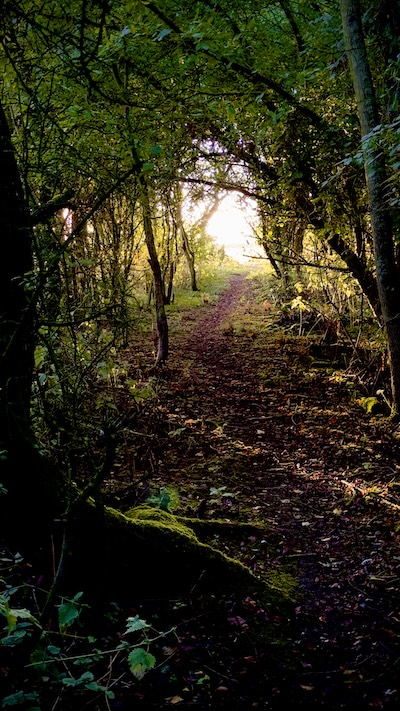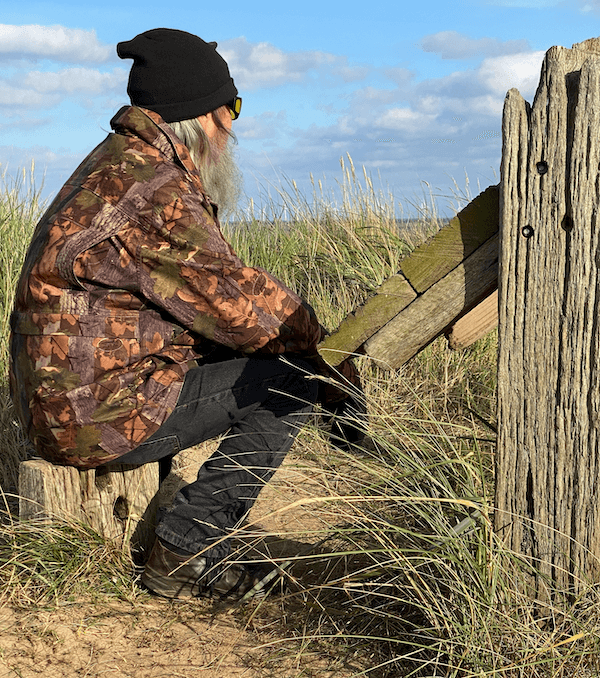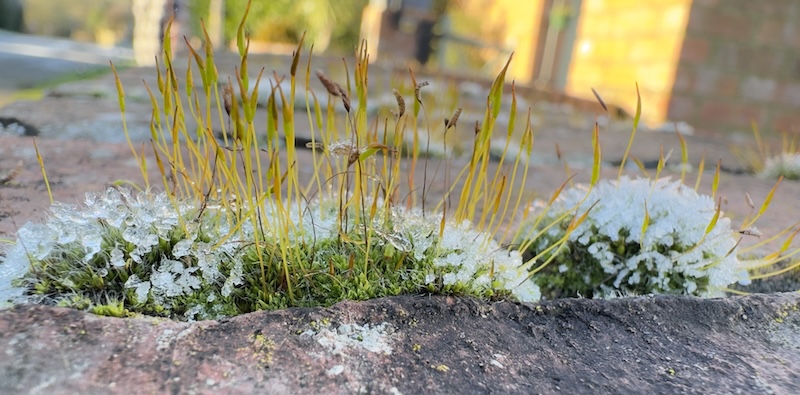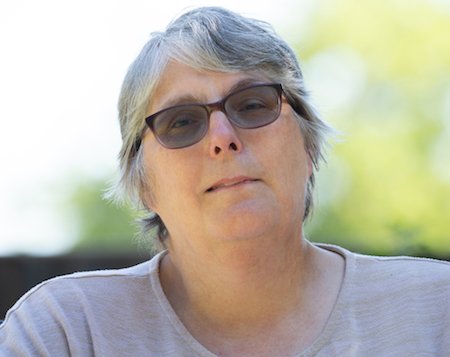- Home
- How to Connect With Nature
How to Connect With Nature - A Guide to Finding What You're Really Looking For
 A wooded area across the road from our house
A wooded area across the road from our houseHave you ever stood in a truly beautiful place—a windswept coastline, an ancient woodland—and felt a strange sense of… nothing?
You know you should be feeling wonder or peace, but instead, there’s a frustrating disconnect. You feel like an outsider looking in, separated from the natural world by an invisible pane of glass. You’re surrounded by life, but you don’t feel a part of it.
I know that feeling intimately.
For years, I believed the solution was to try harder. I thought a deeper connection was a prize to be won, something that waited at the end of a long drive or a difficult hike. I tried to force a connection by chasing grand, "epic" experiences.
It never worked. In fact, it only made the feeling of disconnection worse.
This is the story of how I learned to stop trying so hard and finally found the simple, quiet, and profound connection I was searching for all along.
Why We Mistakenly Chase the "Epic Day Out"
My biggest mistake was believing that connection felt like a lightning strike - a dramatic, "Planet Earth" moment.
I saw a documentary about ospreys on a remote Scottish loch and decided that was what a real connection looked like. So I planned a massive trip, convinced it would deliver the "wow" moment I craved.
The trip itself was a failure. The long drive was draining, the weather was miserable, and the ospreys were distant specks. I came home feeling empty.
This "all-or-nothing" approach is a trap.
We believe a grand effort will yield a grand reward. But it fails because true connection isn't an event; it's a relationship. And relationships aren't built on a single, high-pressure date. They are nurtured through small, consistent, and gentle attention.
Chasing the epic day out doesn't create connection; it creates pressure. And pressure is the enemy of wonder.
 My husband chilling amongst the dunes
My husband chilling amongst the dunesThe Secret to Connection: Learning the Language of Your Local Patch
The profound shift for me happened when I gave up.
I stopped planning big adventures and, on a whim, started taking short, aimless walks in a small, forgotten wooded area near my house.
At first, it was just a walk. But then, day by day, I started to notice things.
I learned to recognise the sharp, inquisitive call of a robin. I saw the first buds of hawthorn breaking in spring. I began to feel the subtle shift in the air that signalled coming rain.
I realised that connection isn't a destination you travel to.
It’s a language you learn. You don't become fluent by taking one big trip abroad; you do it by practicing a little every day, right where you are.
My local patch became my classroom. By visiting it over and over, I was slowly learning its language, and the invisible wall between me and the natural world began to dissolve.
 Frosty greenery on a village wall
Frosty greenery on a village wallA Simple Practice for a Deeper Connection
If you feel that sense of disconnection, the answer isn't to try harder or go further. It's to get quieter and closer.
This is the simple practice I used to move from a disconnected observer to a fulfilled participant.
- Choose a Place to Build a Relationship With.
Find a small, accessible green space—a park, a churchyard, a canal path—that you can visit easily and often.
Don't worry if it's not "spectacular." Your goal is to get to know it intimately. This will become your patch. - Go with Curiosity, Not a Goal.
Leave your ambitions at home. Instead of a mission to "see a woodpecker," give yourself a gentle prompt.
I remember thinking to myself, “I’m just going to look for the colour yellow today.” Other days, the game might be to finally learn what bird is this that I hear every morning?
This soft focus allows you to be present without pressure, and you’ll be stunned by what reveals itself. - Just Listen. Find a spot to sit for five minutes. Don't do anything.
The goal is to move from broadcasting (moving, talking, thinking) to receiving.
At first, it might feel strange. But soon you'll start to notice the layers of sound, the movement of the leaves, the feeling of the air on your skin. This is where connection begins to take root. - See with Your Own Eyes First.
I had to learn this the hard way. My camera, which I thought was a tool for connection, had become a barrier.
I was so busy trying to capture the moment, I was failing to experience it.
Leave your camera at home sometimes. Give yourself permission to let a beautiful moment exist only in your memory. The goal is to have the experience, not to prove you had it.
It's a Feeling of Belonging
True connection with nature isn't a prize you earn on a mountaintop.
It's a quiet, cumulative feeling of belonging that you cultivate over time.
It’s the moment you recognise a bird call and smile because you're greeting an old friend. It's the peace that settles in your heart when you step into your local patch.
It's the feeling of finally being home.

About the Author
For me, it’s never been just about bird names or camera settings, but the thrill of seeing a distant speck turn into a hunting kestrel.
After years of learning how to notice and photograph those moments, my camera has become the tool - and this site the field notebook - where I share what I’ve discovered.
If you’re ready to look a little closer, you’ll find the trips, lessons, and small wins that can help you see and photograph the wildlife right on your doorstep.
Step Behind the Wild Lens
If you’ve enjoyed your time here, you can also follow along by email.
I send the Wild Lens newsletter occasionally. It’s where I share:
- Fresh field notes and recent encounters
- The stories behind favourite photos
- Practical tips that don’t always make it onto the site
You’ll get new UK wildlife guides, photo tips, and ideas for your next walk, straight to your inbox.